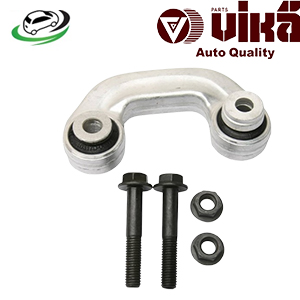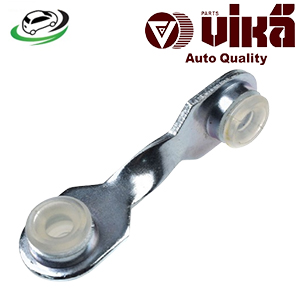Get V-Ribbed Belt Volkswagen Caddy Mk2 1.9D 1995-2004 028903137B
The V-ribbed fan belt, also known as a serpentine belt, is an essential component in a vehicle’s engine system. It drives multiple accessories and components, such as the alternator, power steering pump, water pump, and air conditioning compressor. This guide will explore what a V-ribbed fan belt is, how it works, its benefits, common issues, and maintenance tips.
What is a V-Ribbed Fan Belt?
A V-ribbed fan belt is a type of belt used in modern vehicles to transfer power from the engine’s crankshaft to various accessories and components. Unlike traditional V-belts, which have a simple V-shaped cross-section, the V-ribbed fan belt features a series of ribs or grooves on the underside, allowing it to run smoothly on pulleys with multiple ribs.
How Does a V-Ribbed Fan Belt Work?
The V-ribbed fan belt operates through the following mechanisms:
- Power Transfer: The belt is driven by the engine’s crankshaft pulley, which rotates as the engine runs. The ribs on the underside of the belt grip the pulleys of various accessories, transferring rotational power to them.
- Driving Multiple Components: The V-ribbed belt typically drives several components simultaneously, including the alternator, power steering pump, water pump, and air conditioning compressor. This eliminates the need for multiple separate belts.
- Flexibility and Alignment: The ribbed design of the belt allows it to flex and adjust to different pulley configurations, maintaining proper alignment and reducing slippage. This ensures efficient power transfer to all driven components.
- Noise Reduction: The ribbed design also helps reduce noise and vibration compared to traditional V-belts, leading to quieter engine operation.
Benefits of a Properly Functioning V-Ribbed Fan Belt
A well-functioning V-ribbed fan belt offers several important benefits for vehicle performance and reliability:
- Efficient Power Transfer: The belt provides efficient power transfer to multiple components, ensuring that accessories such as the alternator and power steering pump operate smoothly.
- Improved Engine Performance: By driving essential accessories effectively, the V-ribbed belt helps maintain optimal engine performance and fuel efficiency.
- Reduced Maintenance: A single V-ribbed belt can replace multiple separate belts, simplifying maintenance and reducing the likelihood of belt failures.
- Quieter Operation: The ribbed design helps reduce noise and vibration, leading to a quieter and more comfortable driving experience.
- Increased Durability: V-ribbed belts are typically made from high-quality materials that offer improved durability and resistance to wear, heat, and stretching.
Common Issues with V-Ribbed Fan Belts
Over time, V-ribbed fan belts can experience various issues that may affect their performance and the overall engine system. Common problems include:
- Wear and Tear: The belt can wear out due to regular use, leading to reduced efficiency, slippage, and potential failure. Signs of wear include fraying, cracking, or glazing on the belt surface.
- Misalignment: Improper alignment of the pulleys or belt tension can cause the belt to wear unevenly or slip, leading to reduced performance and potential damage to accessories.
- Belt Slippage: Slippage occurs when the belt does not maintain proper contact with the pulleys, often due to insufficient tension or wear. This can affect the performance of driven components.
- Cracking and Fraying: Exposure to heat, oil, and other contaminants can cause the belt to crack or fray, reducing its effectiveness and increasing the risk of failure.
- Tension Issues: Incorrect tension, whether too loose or too tight, can lead to poor performance and premature wear of the belt and associated components.
Signs of a Failing V-Ribbed Fan Belt
Identifying the signs of a failing V-ribbed fan belt can help address issues before they lead to more severe engine problems. Common symptoms include:
- Squealing Noises: A high-pitched squealing noise, especially during startup or acceleration, can indicate a worn or slipping belt.
- Power Loss: Reduced performance of accessories such as the power steering or air conditioning can be a sign of a failing belt.
- Warning Lights: Some vehicles have warning lights or indicators on the dashboard that may signal a problem with the drive belt system.
- Visual Damage: Inspecting the belt may reveal visible signs of damage, such as cracks, fraying, or glazing on the belt surface.
- Loss of Accessory Function: If accessories driven by the belt, such as the alternator or water pump, are not functioning correctly, it may be due to a problem with the belt.
Maintenance and Replacement
Regular maintenance and timely replacement of the V-ribbed fan belt are essential for ensuring reliable vehicle performance. Here are some maintenance tips:
- Regular Inspections: Periodically inspect the V-ribbed belt for signs of wear, damage, or misalignment. Check for any visible cracks, fraying, or glazing on the belt surface.
- Check Tension: Ensure that the belt has the correct tension. Too much or too little tension can lead to performance issues and premature wear. Consult the vehicle’s manual for the recommended tension specifications.
- Replace Worn Belts: If the belt shows signs of significant wear or damage, replace it with a high-quality part that meets or exceeds the manufacturer’s specifications.
- Inspect Pulleys: Check the pulleys for proper alignment and condition. Misaligned or damaged pulleys can cause excessive wear on the belt and reduce its effectiveness.
- Professional Inspection: If you suspect a problem with the V-ribbed belt or the drive belt system, have a professional mechanic inspect the vehicle for a thorough diagnosis and repair.
Replacement Procedure
Replacing a V-ribbed fan belt typically involves the following steps:
- Preparation: Ensure the engine is cool and the vehicle is on a level surface. Gather the necessary tools and a replacement V-ribbed belt.
- Locate the Belt: Identify the location of the V-ribbed belt and its routing around the pulleys. Refer to the vehicle’s manual or a belt routing diagram if available.
- Remove the Old Belt: Depending on the vehicle, you may need to release tension on the belt using a tensioner pulley or tool. Carefully remove the old belt from the pulleys.
- Install the New Belt: Position the new V-ribbed belt around the pulleys according to the routing diagram. Ensure that the belt is properly aligned and seated in the pulley grooves.
- Adjust Tension: Reapply tension to the belt according to the manufacturer’s specifications. Ensure that the belt is neither too tight nor too loose.
- Check for Proper Operation: Start the engine and check the belt for proper operation. Listen for any unusual noises and verify that the belt is running smoothly on the pulleys.
- Test Drive: Take the vehicle for a test drive to ensure that the belt and associated components are functioning correctly and that there are no issues with performance.
Follow us on Facebook for more parts.



